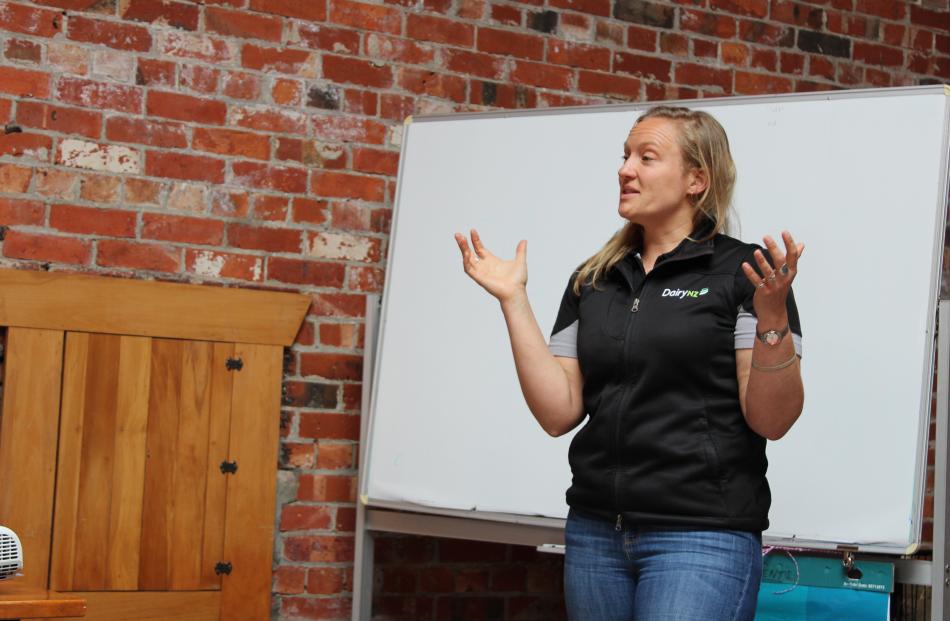Caring for calves the right way from birth is key to getting good milking cows, industry representatives say.
Dairy Women's Network ran a weaning workshop in Gore recently, where DairyNZ's Sarah Dirks, LIC farm solutions manager Lynda Ford, Farmwise consultant Mo Topham and veterinarians Kath Taylor and Kim Kelly spoke about the dos and don'ts of weaning calves.
One of the key topics was the use of penicillin (penno) milk and also transitioning calves off milk altogether.
Vet Kim Kelly said penno milk should never be fed to young calves.
''In an ideal world we really don't like anything three or four weeks of age having that at all. That's when calves get everything. The first month ... [is when] the calf is under the most stress.''
There had been studies completed in the United States which had found cows had a bigger resistance to penicillin if they were fed penno milk as a calf, she said.
The cows ended up with some sort of antimicrobial resistance.
''Giving calves low doses of penicillins is setting them up for failure.''
It was always best to feed ''gold'' [high quality] colostrum and colostrum to calves and they could be kept for longer using storage methods, she said.
Refrigeration, colostrum keeper, yoghurt and potassium sorbate were all ways farmers could store colostrum.
If farmers were going to feed penno milk ''dilution is the solution to pollution'', Dr Kelly said.
LIC had developed a Minda TM Weights programme which would track young stock weights (for animals 0-24 months) against targets generated from liveweight breeding values, generated from their parentage history.
Mrs Ford said the programme meant farmers could track the progress being made by their young stock, and was ideal for farmers who sent stock away for grazing.
There was a lot of variance among calves, so Minda Weights allowed both farmers and the grazier to track the progress being made, she said.
It accounted for different breeds, understanding that a Jersey was never going to weigh as much as a KiwiCross, Mrs Ford said.
''What we've seen in our projects is the small heifers are always the small calves,'' Ms Dirks said.
Making an investment in a calf early on was worth it in the long run as it paid off when the cow was getting milked, she said.
The key was getting the weaning transition right, and making sure calves were eating enough meal to be weaned, Ms Dirks said.
In one farm's example, the farmer would wean the calves at seven weeks and weigh them before they were taken off milk, she said.
''If they [the calves] were losing weight or staying the same, they would go back on milk for at least another two weeks.''
When it came to milk in the vat, and whether you should be raiding it to continue to feed calves, the advice was if the calves were eating enough meal and grass they could be weaned, Dr Taylor said.
''If they are eating enough meal and grass, I would say leave the milk in the vat.''
It cost between $1000-1200 to raise a calf from artificial insemination, so raising it right from day one meant it would be set up for life, Ms Dirks said.
This would also set up the grazier to do well taking the calf through winter. It would mean when it came back to the milking platform it would be in the best condition possible, she said.


